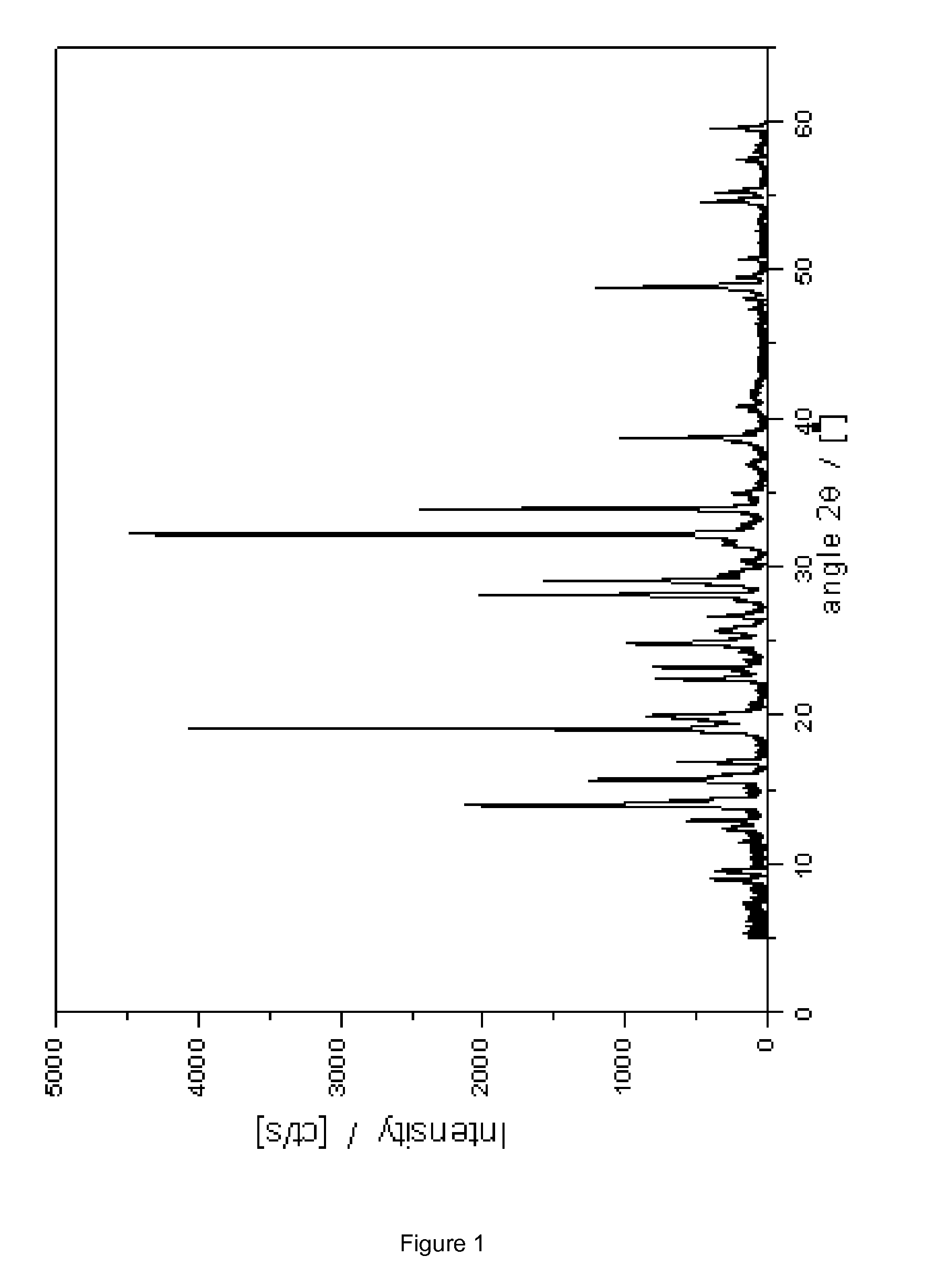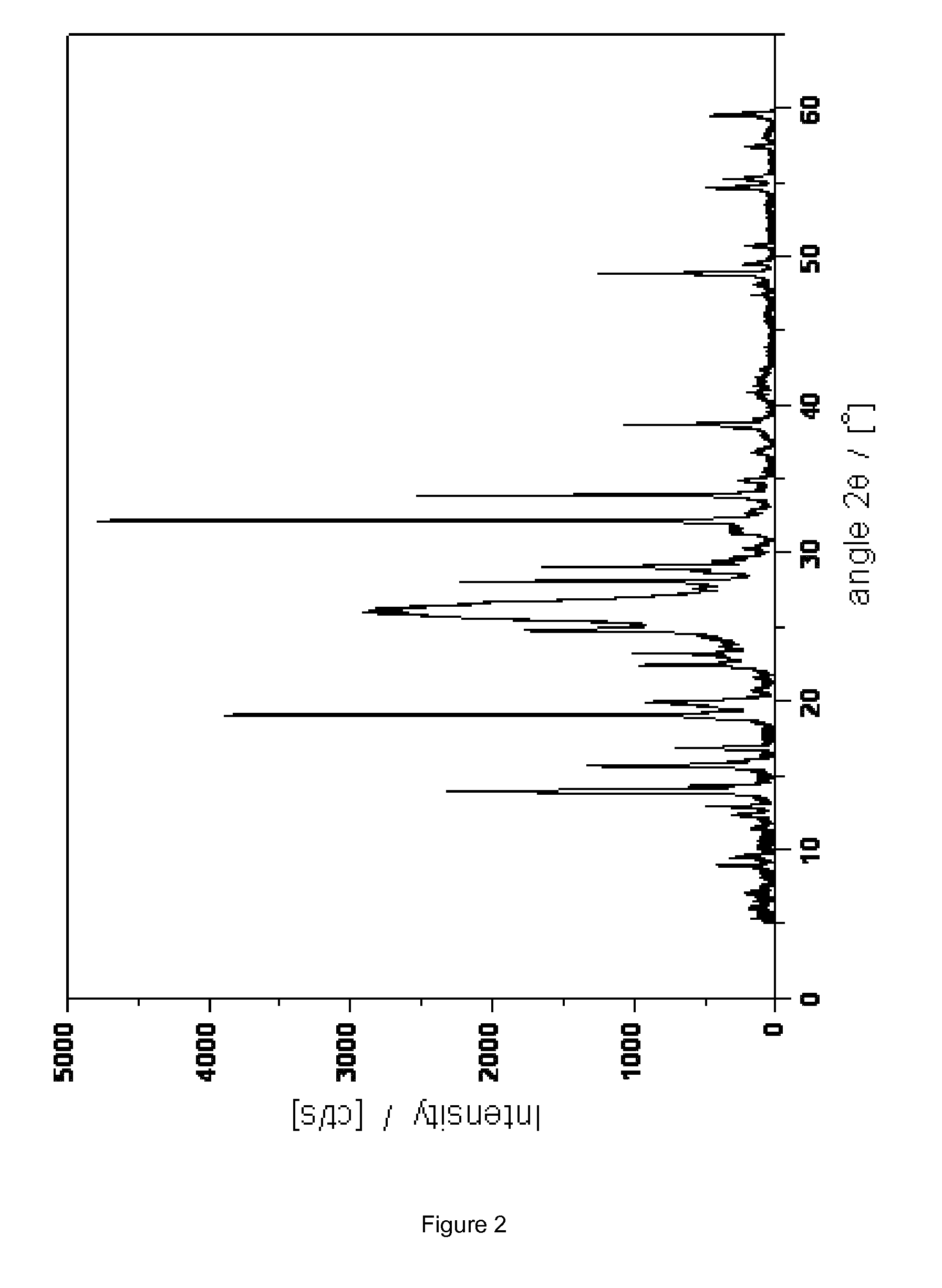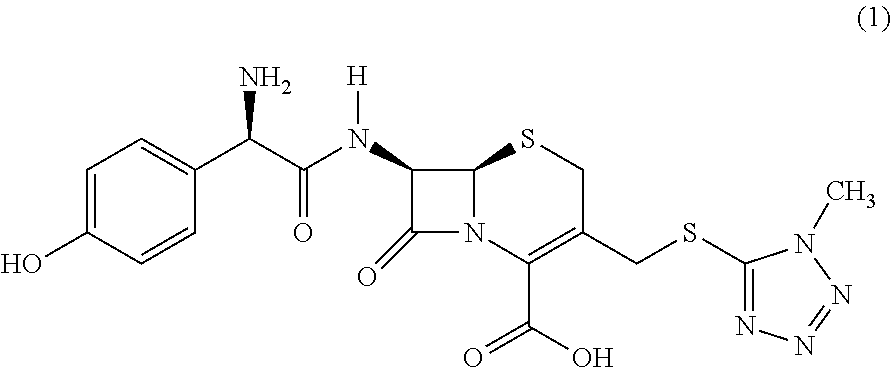Novel crystalline cefoperazone intermediate
- Summary
- Abstract
- Description
- Claims
- Application Information
AI Technical Summary
Benefits of technology
Problems solved by technology
Method used
Image
Examples
example 1a
[0037]7-Amino-3-(1-methyl-1H-tetrazol-5-ylthiomethyl)-3-cephem-4-carboxylic acid (7-TMCA; 5 g) was added to distilled water (38 g) and cooled to 3° C. The mixture was stirred at 400 rpm and the pH was brought to 9.0 with aqueous NaOH (5M) whereafter the remainder of the reaction was carried out at pH 8.8. After 60-80 min, the suspension was filtered. The filtrate, containing 4.1 g of 7-TMCA, was place back in the reactor and immobilized penicillin G acylase mutant 1 (3.5 g, see Materials and Methods) was added and to the resulting mixture a solution of D-4-hydroxyphenylglycine methylester (HPGM) was dropped at speed of 7 mL / h by a syringe pump (dosing time 2 h). This solution was prepared by dissolving HPGM (4.0 g, 1.7 equiv.) in water (6.4 g) and H2SO4 25% (4.25 g in water). The enzymatic reaction was followed by analytical HPLC (see Materials and Methods) and stopped at the end of HPGM addition, by enzyme filtration. The conversion was 98% (w.r.t. 7-TMCA). The mixture contained 1....
example 1b
[0039]As Example 1a with the following differences: the reaction was titrated using 1M sodium hydroxide and the down stream processing performed without MeOH. The conversion was 93% (w.r.t. 7-TMCA). The mixture contained 0.75% (w / w) HPG, 0.3% (w / w) 7-TMCA, 0.2% (w / w) HPGM, 6.6% (w / w) of the title compound and 0.13% (w / w) 5-mercapto-1-methyltetrazole. In the HPLC chromatogram two minor not identified impurities were visible with 2SO4 (1.6 g) was added in 10 min to give a pH of 7.0. During this operation, a white solid precipitated and was isolated after which the morphology changed into a brown gum.
example 1c
[0040]As Example 1b with the following differences: HPGM added as solid during the reaction and the reaction was performed at pH 8.7.
[0041]After 240 min, the conversion was 67% (w.r.t. 7-TMCA). The mixture contained 0.43% (w / w) HPG, 1.6% (w / w) 7-TMCA, 0.12% (w / w) HPGM, 6.1% (w / w) of the title compound and 0.12% (w / w) 5-mercapto-1-methyltetrazole.
PUM
| Property | Measurement | Unit |
|---|---|---|
| temperature | aaaaa | aaaaa |
| temperature | aaaaa | aaaaa |
| temperature | aaaaa | aaaaa |
Abstract
Description
Claims
Application Information
 Login to View More
Login to View More - R&D
- Intellectual Property
- Life Sciences
- Materials
- Tech Scout
- Unparalleled Data Quality
- Higher Quality Content
- 60% Fewer Hallucinations
Browse by: Latest US Patents, China's latest patents, Technical Efficacy Thesaurus, Application Domain, Technology Topic, Popular Technical Reports.
© 2025 PatSnap. All rights reserved.Legal|Privacy policy|Modern Slavery Act Transparency Statement|Sitemap|About US| Contact US: help@patsnap.com



